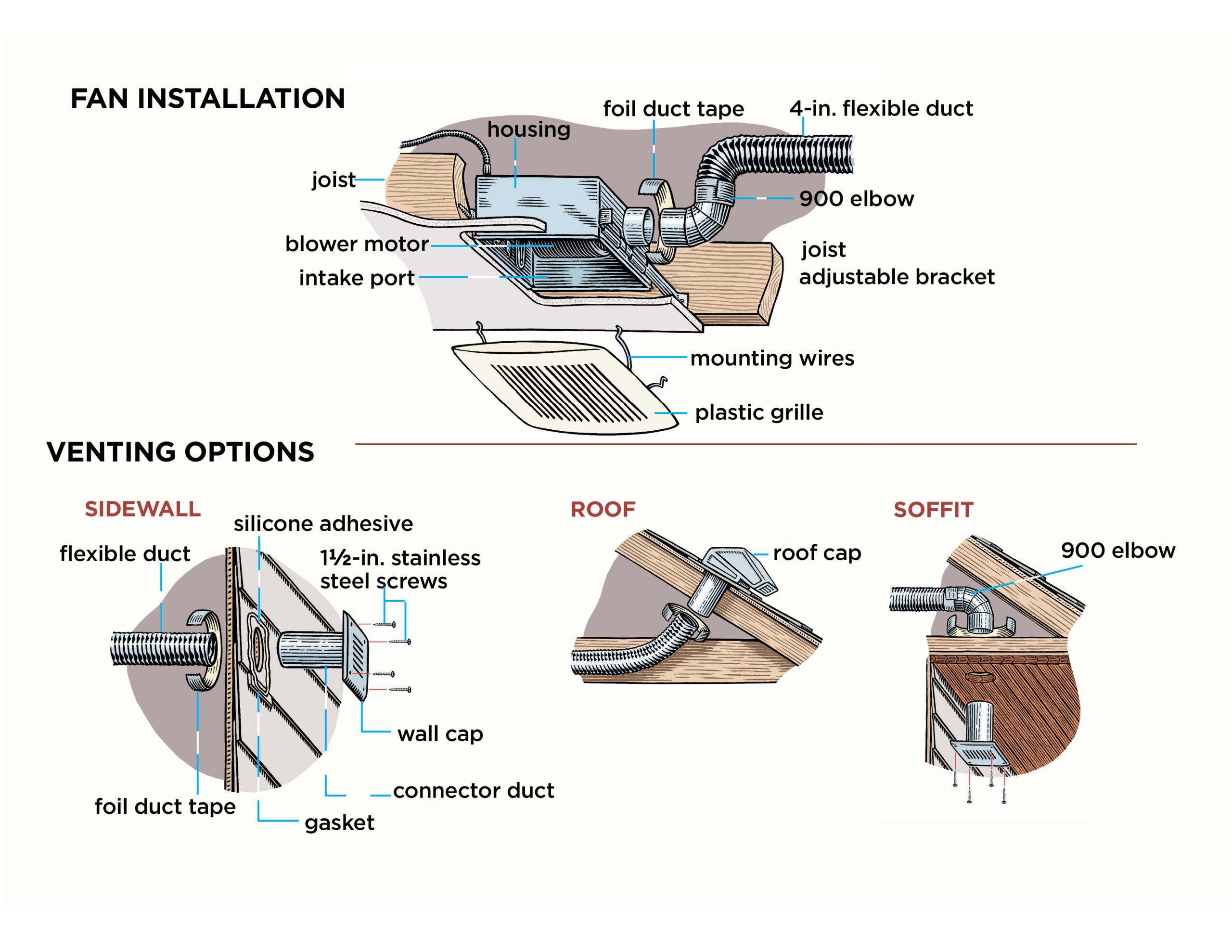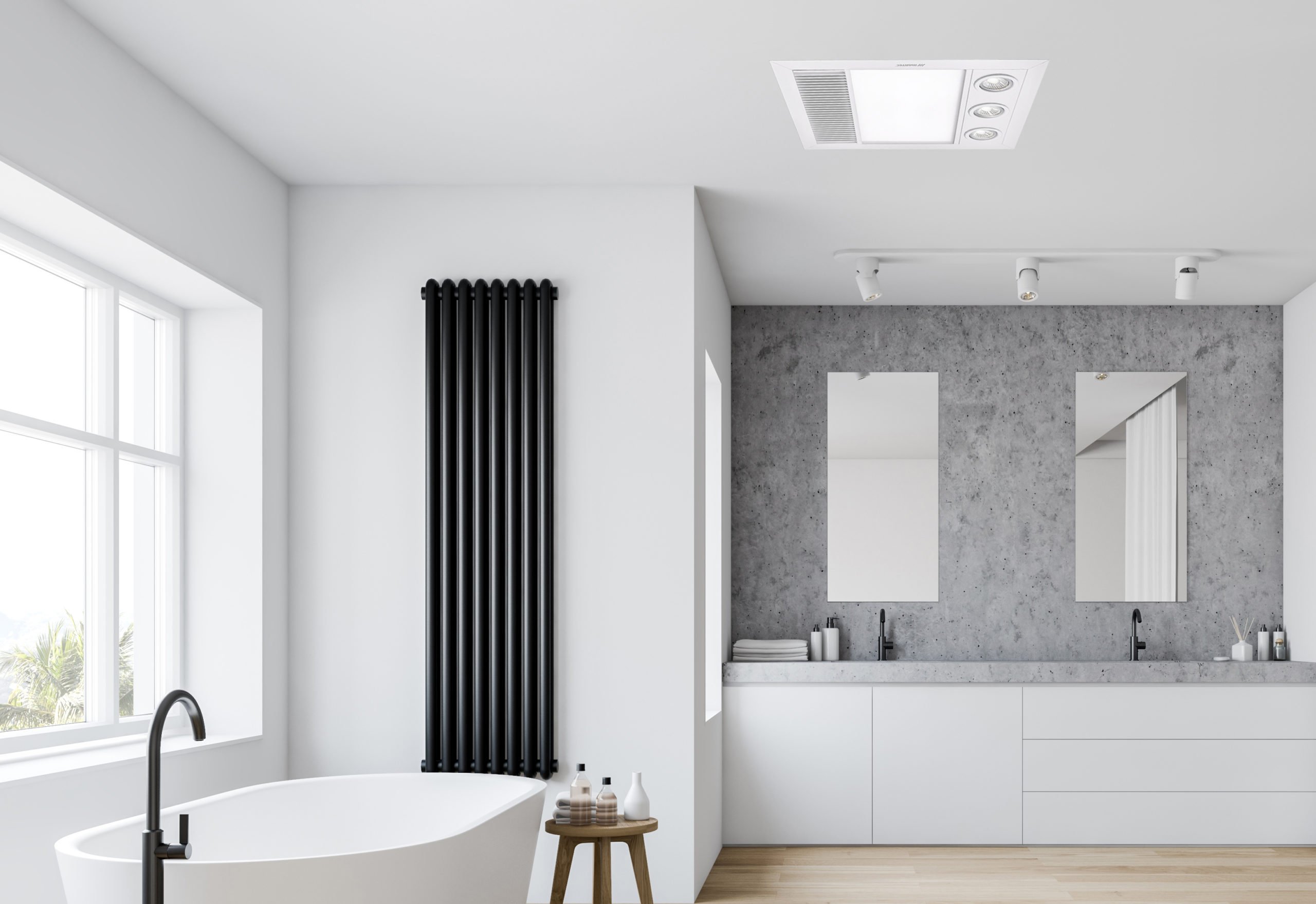Benefits of Installing Two Exhaust Fans in a Bathroom

Two exhaust fans in one bathroom – Installing two exhaust fans in a bathroom offers significant advantages, enhancing ventilation, reducing moisture, and improving air quality. By effectively removing excess moisture and pollutants, two exhaust fans help prevent the growth of mold and mildew, creating a healthier and more comfortable bathroom environment.
Improved Ventilation and Reduced Moisture
Two exhaust fans work synergistically to increase air circulation and remove excess moisture from the bathroom. The combined airflow effectively eliminates lingering humidity, preventing the buildup of condensation on surfaces and reducing the risk of water damage. This improved ventilation also helps to eliminate odors and stale air, creating a fresher and more pleasant bathroom atmosphere.
With two exhaust fans whirring in the bathroom, the air becomes a vortex of freshness, each fan claiming its own territory. But what if we could define bathroom zones for fans, optimizing their efficiency? As the steam from the shower rises, one fan could focus on extracting it, while the other tackles odors from the toilet area.
Discover more about bathroom zones for fans here , ensuring your bathroom remains a haven of invigorating air.
Prevention of Mold and Mildew Growth
Mold and mildew thrive in moist environments, posing potential health hazards. Two exhaust fans effectively reduce moisture levels, creating an unfavorable environment for these microorganisms. By preventing mold and mildew growth, the fans help maintain a cleaner and healthier bathroom, reducing the risk of respiratory issues and allergic reactions.
Enhanced Air Quality
Two exhaust fans improve air quality by removing pollutants, such as dust, pollen, and volatile organic compounds (VOCs). These pollutants can accumulate in bathrooms due to various activities like showering, cleaning, and using hair products. By effectively removing these pollutants, the fans create a healthier and more comfortable breathing environment.
Suitable Bathrooms for Two Exhaust Fans
Installing two exhaust fans is particularly beneficial in bathrooms that are large, poorly ventilated, or frequently used. Large bathrooms require more airflow to effectively remove moisture and pollutants. Poorly ventilated bathrooms lack adequate natural ventilation, making exhaust fans essential for maintaining a healthy indoor air environment. Frequently used bathrooms generate more moisture and pollutants, necessitating the increased ventilation provided by two exhaust fans.
In a bathroom graced with the harmony of two exhaust fans, the air danced with a whisper, clearing away the steam and humidity. As if by some serendipitous alignment, the walls adorned with ice cream wallpaper seemed to melt and swirl in a symphony of colors, mirroring the rhythmic hum of the fans.
The air, now cool and refreshing, carried the sweet scent of summer treats, blending seamlessly with the gentle breeze created by the exhaust fans, creating a sanctuary of tranquility.
Considerations for Installing Two Exhaust Fans in a Bathroom: Two Exhaust Fans In One Bathroom
Installing two exhaust fans in a bathroom requires careful planning and consideration to ensure optimal ventilation and efficient removal of moisture and odors. Several factors must be taken into account to achieve the desired results, including the size of the bathroom, the location of the fans, and the type of fans to be used.
Bathroom Size and Fan CFM
The size of the bathroom plays a crucial role in determining the appropriate CFM (cubic feet per minute) rating for the exhaust fans. A larger bathroom requires a higher CFM rating to effectively remove moisture and odors. The HVI (Home Ventilating Institute) recommends a minimum CFM of 50 CFM for bathrooms up to 100 square feet, and an additional 50 CFM for every additional 100 square feet.
Fan Location and Placement
The location of the exhaust fans is equally important to ensure optimal ventilation. Ideally, one fan should be installed near the shower or bathtub, where the most moisture is generated. The second fan should be placed on the opposite wall or ceiling, creating a cross-ventilation pattern that effectively removes moisture and odors throughout the bathroom.
Fan Type and Noise Level
The type of exhaust fans used in a bathroom also affects the overall performance and efficiency. Axial fans are the most common type, featuring a propeller-like blade that moves air in a straight line. Centrifugal fans are more powerful and quieter, making them suitable for larger bathrooms or bathrooms with higher moisture levels. When selecting exhaust fans, it is important to consider the noise level, as some fans can be noisy and disruptive during use.
Installation and Maintenance of Two Exhaust Fans in a Bathroom

Installing and maintaining two exhaust fans in a bathroom is crucial for ensuring proper ventilation and preventing moisture buildup. Here’s a comprehensive guide to help you navigate the process:
Installation, Two exhaust fans in one bathroom
Begin by gathering the necessary tools: a drill, screwdriver, wire cutters, and a level. Safety precautions include wearing safety glasses and ensuring the power is turned off at the circuit breaker.
Mark the locations of the fans on the ceiling, ensuring they are evenly spaced and at least 12 inches from any walls or fixtures. Use a drill to create pilot holes for the mounting brackets and secure them with screws.
Connect the fan wires to the electrical wires in the ceiling, matching black to black, white to white, and green or bare wire to the ground wire. Secure the connections with wire nuts and tuck them into the junction box.
Slide the fan housing onto the mounting bracket and secure it with screws. Repeat the process for the second fan.
Maintenance
Regular maintenance is essential for optimal fan performance. Clean the fans every three to six months by wiping them down with a damp cloth and vacuuming the dust from the grilles.
Replace the filters as per the manufacturer’s instructions, typically every six to twelve months. Clogged filters can restrict airflow and reduce fan efficiency.
Troubleshooting common problems includes checking the power supply, ensuring the fan is properly wired, and cleaning or replacing the filters. If the fan is still not operating correctly, contact a qualified electrician.
